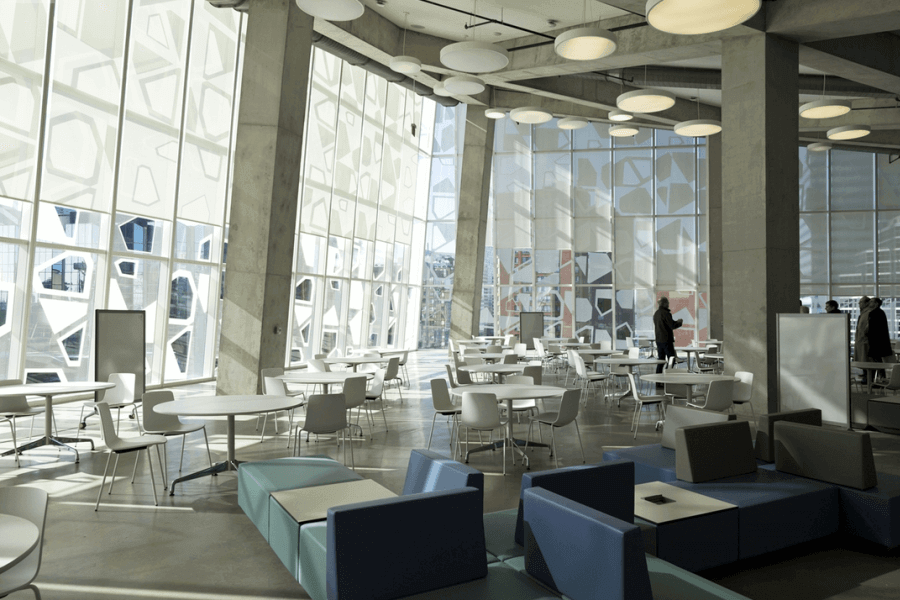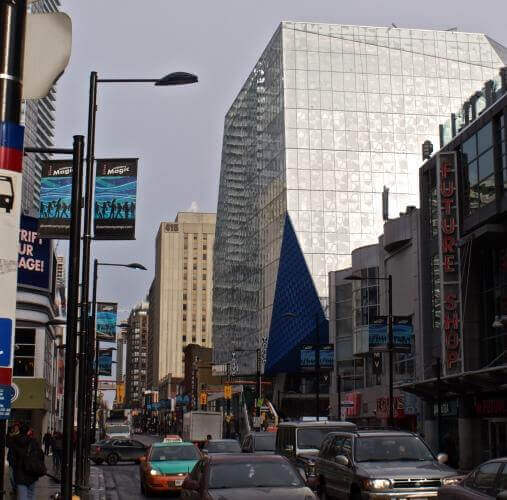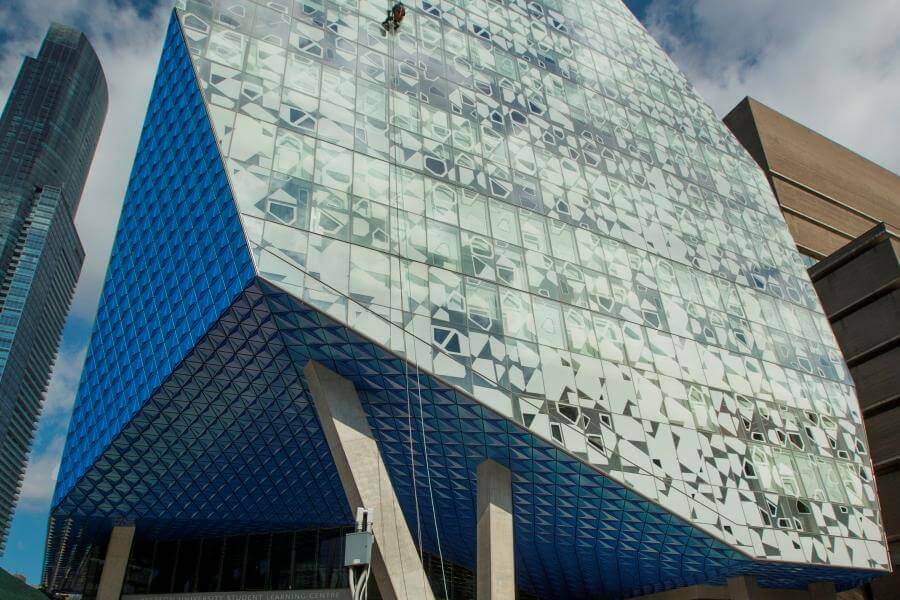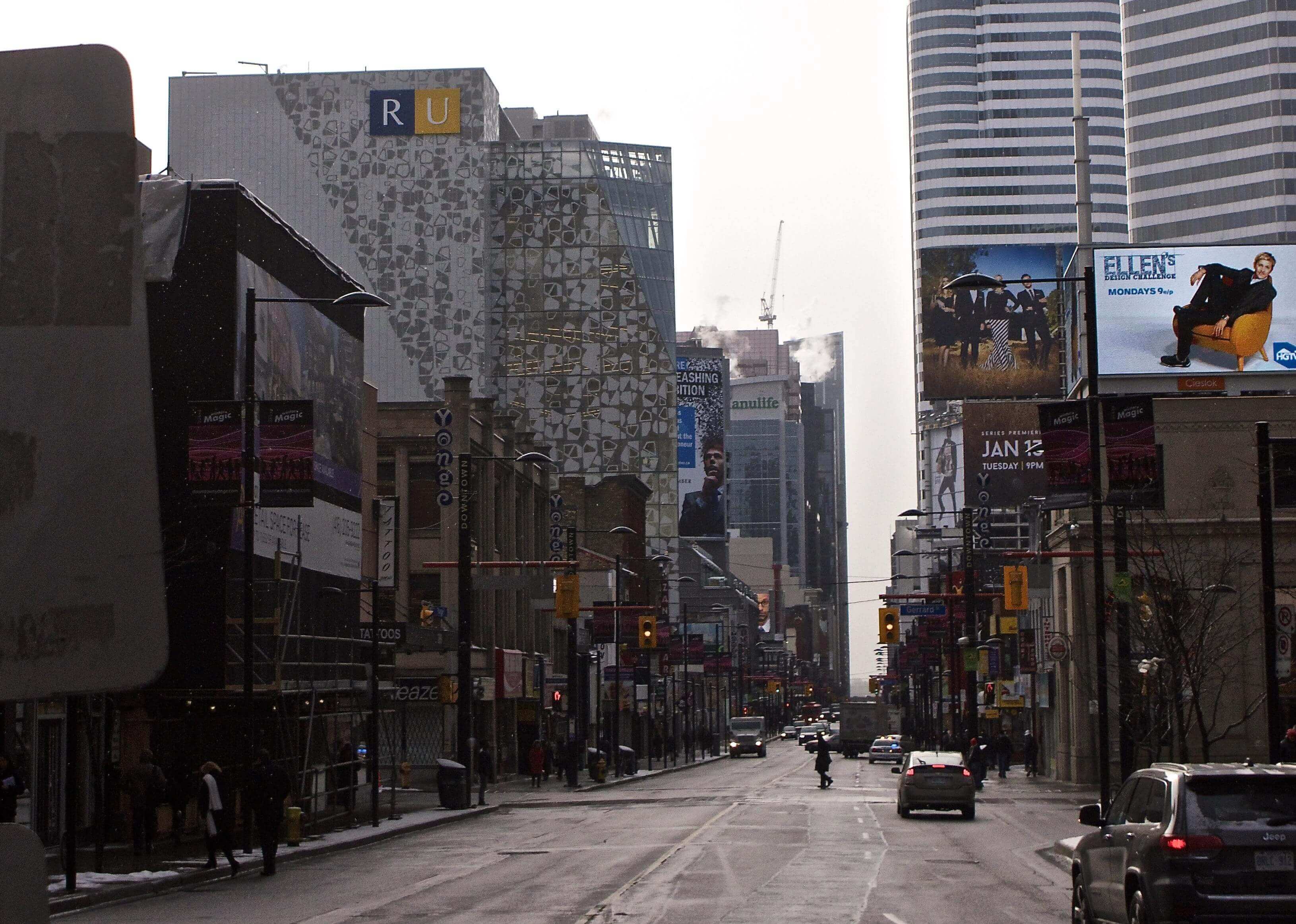Winner of 2015 Glass Magazine Award – Most Innovative Decorative Glass Project, Exterior
Toronto Ryerson University
The digital ceramic printed glass façade that envelopes the Ryerson University Student Learning Center creates a unique visual impact.
The glass curtain wall is both attractive and practical, with the combination of the graphic design and the functionality of the glass creating varying light qualities within the interior space.
Prelco bid on the Ryerson project before owning a Dip-Tech printer, but was able to quickly get up to speed with the new technology. Ryerson was an ideal first project because it was complex and large, which accelerated the learning curve. The project was required to meet LEED standards and come in under a set budget, while maintaining the integrity of the design. Digital ceramic glass printing was the key enabler to meeting all of those traditionally conflicting requirements.
Printed Area: 5,000+ sqm / 53,820+ sqf
Number of Panels: 3,000+
Colors: White
Glass Type: Triple sealed unit, 45mm
Completed: 2014
Winner of 2015 Glass Magazine Award – Most Innovative Decorative Glass Project, Exterior
Mike Smith, Senior Associate, Zeidler Partnership Architects
60% Glass and Still Energy Efficient
Ryerson requires that their buildings be LEED certified - so for this project the architects and designers had to find ways to achieve energy efficiency, while maintaining natural views and natural light with a glass curtain wall. This was achieved by combining several energy efficient products and technologies including a triple glazed system, low-e coating, and ceramic frit. The resulting structure met all the goals: thermal comfort for the interior (students can sit and study comfortably), glare control on the interior (for students using computers), sun and shade control within the building, and bird safety. Signficantly, the combination of technologies enabled glass to be used for 60% of the building, significantly outstripping most LEED-certified buildings that are no more than 40% glass.
The original plan was to use 3,000 unique panels while maintaining all the requirements for LEED. Digital print could easily support this plan, but the logistics of managing and installing such a project was a nightmare, and costly. Instead the Ryerson project team decided to keep the angles on all of the glass panels the same, making alignment during installation much easier. They used 20 patterns that were flipped, creating 40 patterns that together produced the desired effect. Visually, the digital printed façade had a profound effect on the overall look of the building. The panels were fastened to mullions with silicon so there were no protrusions, for a clean and smooth appearance. This creates a feeling of one large and unique structure, as opposed to a standard building with stacked floor plates. In addition the building itself serves as a beacon of light in the evening, reflecting the university’s presence on the street.





